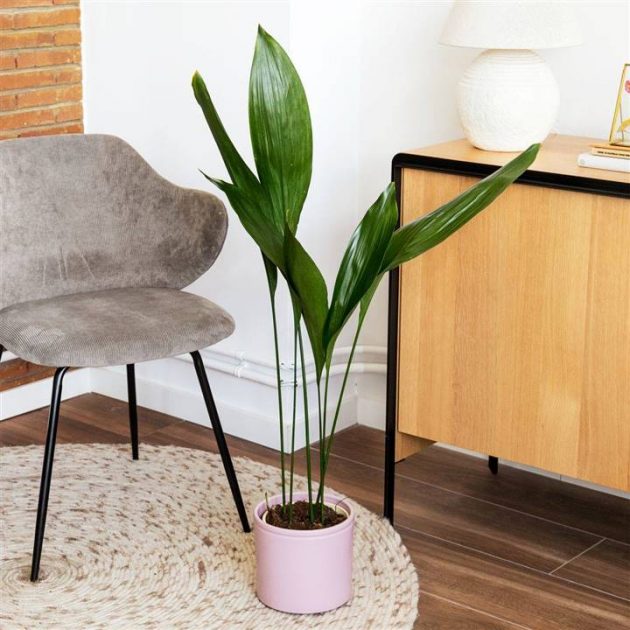If your hall doesn’t have the natural light that usually indoor plants need to bloom it doesn’t mean that you still can’t have indoor plants in the entrance. Even though if you didn’t know there are some indoor plants called the “vampire” plants that truly appreciate being away from direct sunlight because their leaves or flowers can be easily damaged. Yes, damaged by the sun. What’s important to stay on your mind is that although there are plants that can grow without the help of the sun, they should enjoy a minimum contribution of artificial light at least.
Here are some of them:
Anthurium: a very striking plant with colorful bracts
Its characteristics and colorful bracts (not flowers) are the best presentation of anthurium, a plant native to the Colombian jungles that combine beauty, showiness, easy-care, and few light needs. Its abundant, spectacular foliage and its heart-shaped leaves give it a highly appreciated exotic point. Although the traditional color of its bracts is red, the anthurium color assortment is very wide, from pink, as in this Colvin proposal, to orange, passing through white.
Sansevieria: a showy and very rustic plant
Also called tiger’s tongue because of its sharp leaves, sansevieria is an all-terrain plant native to South Africa that will give color to any corner of the house, even a dimly lit hall. And, despite being a sun-loving plant, although never direct because it could damage its leaves, its rusticity makes it ideal for spaces with poor light. The only “but” is that its growth will be slower and the different shades of its leaves will become one color.
Native to Central and South America, yucca is a very hardy plant that can thrive in very little natural light. Although there are more than 50 different varieties, the most suitable for growing indoors is the yucca elephantipes. It is a slow-growing plant, but it has in its favor that it is very easy to care for. It is characterized by its woody, erect, and little branched trunks and its long lanceolate, green leaves.
Drácena: a unique plant that cleans the air
The dracaena is a thin foliage plant native to tropical Africa that is highly appreciated indoors for its easy cultivation, its color, and its ability to adapt to different light conditions. Thus, the dracaena can live in bright environments but also with little natural light. Its uniqueness is that, as it grows, it loses the lower leaves, leaving a thin bare stem that usually arches, creating very decorative effects. One more point in your favor? It is one of the plants that, according to a NASA study, helps clean the air in the home.
Philodendron heart leaf: a vine to color the hall
The heart-leaved philodendron is one of the most common indoor plants due to its easy cultivation and low light requirements, although its growth will be affected by slowing down. It is a perfect option to decorate a shelf in a hall since its cascade growth will dress the space by itself.
Aspidistra: a plant with lush green foliage
Beauty, lush foliage, low light input… and hardly any care! These are some of the properties of the aspidistra, a plant that came to Europe from China and Japan in the early nineteenth century. It is a large but slender plant that helps reduce noise pollution.




















